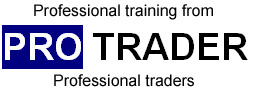The Pro-Trader courses offer traders a mix of discretionary, mechanical and fully automated systems in both our forex training courses and automated emini daytrading courses. I thought it worth taking a couple of minutes to explain the difference between these three methods of trading.
Most traders initially start by using judgement based discretionary trading methods. With this type of trading the trader accumulates a variety of data whether it is fundamental or technical and then makes judgments based on his individual personal interpretation of that data. He will then manually enter all of his orders on to the trading platform . Discretionary trading may involve monitoring markets on an hour to hour or even minute to minute bases or using simple “set and forget “ methods such as we supply – which do not require you to be glued to the trading screens.
Discretionary trading decisions may either be made based on pure “seat of the pants” gut feelings or based upon some general interpretation of more detailed broad brush rules including the use of one or more indicators. For instance many discretionary traders may use an indicator such as MACD or RSI and pay particular attention when these are broadly rising above certain levels or falling below certain levels etc.
The key feature of discretionary trading is that there is always a degree of personal individual judgement involved when selecting the precise entry and exit points. This means that actual results will vary from trader to trader depending on each individual traders interpretation of both the rules and any indicators being used. That quality of results obtained will therefore to some extent depend on each individuals level of skill and or experience and how well or otherwise they have mastered the interpretation of the particular method they are using.
Discretionary trading systems are very flexible and often the rules can be simple to learn yet they allow you to rapidly start trading a multitude of different instruments and timeframes.
So one of the big advantages of using discretionary trading techniques is that generally the same basic method can be applied to pretty well any market and any time frame of trading. The same method could for instance be used to daytrade emini S&P futures using say 5 minute bars whilst swing trading say EUR/USD on say 4 hr bars.
All of the pro-trader discretionary trading systems are configured as “set and forget systems” where the trader will look for a particular defined setup and if that is present they will place the entry and exit orders. Once the orders are in the Broker monitors the trades throughout the day and the trader can go about his normal business.

